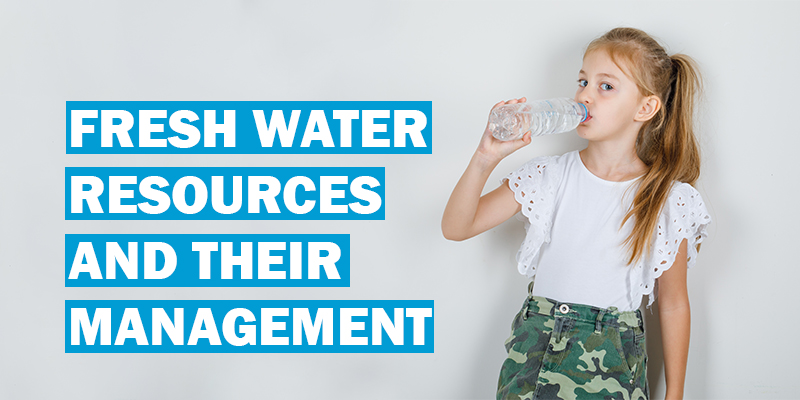Freshwater Resources and Their Management
Freshwater is important for life and its very existence. It supports the ecosystem and human civilization thrives on freshwater. However, the reserves of freshwater are getting threatened and our future generations may not have access to this ‘treasure’ if we don’t take steps to conserve it today. Out of the total 71% of the water on Earth, only 3% is made up of freshwater.
Major Sources of Freshwater:
Freshwater is stored in lakes, rivers, reservoirs, creeks, and streams. Most of the usable water in our houses today comes from these sources.
Lakes
The water in lakes comes from rain, snow, melting ice, streams, and groundwater. These sources are of different sizes and depths, and they make for most of the freshwater reserves.
River
River water can be used for household purposes and it plays an important role in the water cycle. The levels of water in the river change through the seasons.
Reservoirs
A reservoir is where water is collected and stored for purpose of irrigation and for supplying to the community.
How Does Freshwater Reach Our Homes?
The public water supply system arranges to carry water from the source to our homes via pipes. The water is filtered and treated upon with chemicals to get rid of any impurities or bacteria in the water. Even the water that comes in our taps is not safe for drinking. One needs to further treat it or pass it through a water purifier system before consuming it.

What is threatening freshwater reserves?
Greater Demand
The reserves of fresh water on Earth is not matching up to the growing population’s needs. The demand is exceeding supply and there is too much pressure on the existing resources. Some of these water bodies are already kind of turning dry.
Excessive Pollution
Industrial waste is being dumped in to the water and thus making the freshwater unfit for drinking. The fish having their habitat in lakes & rivers consume the polluted water and die, causing an imbalance in the ecosystem. The more contaminated the water is, the more money public water services have to spend in order to treat it. There are also chances of treatments not being effective and thereby harming human health.
Climate Change
Along with changes in climatic conditions, the water cycle gets adversely affected. Too much evaporation due to excessive heat causes the source to dry up. In turn, very little rainfall or scanty showers may not be sufficient to fill up the levels in the freshwater bodies, thereby causing a huge problem.
Carolina’s Smithsonian Science for the Classroom lesson on – How Can We Provide Freshwater to Those in Need?
This is a new curriculum series by Carolina for students of 5th grade all across the world, including Dubai and the UAE. The module focuses on the following:
- Understanding the need of freshwater for humans and learning about the scarcity of freshwater reserves on Earth, thereby defining the problem.
- Curating a study and developing a model to understand how human activities interfere with the components of Earth to cause pollution in groundwater.
- Discussing and devising strategies to find solutions to treat contaminated water.
- Debating on the causes and the effects of an environmental crisis.
- Devising and testing a solution to pump out water from a freshwater source, followed by its treatment and then finding a way to carry it to households.
This module also delves into the aspects of water treatments at a household level:
Water that you feel suspicious about in your homes that is used for various purposes like; washing, drinking, cooking, and brushing, needs to be treated effectively before using it for the respective purposes. There are many simple ways to treat water at home and include the following;
Boiling
Treat water by boiling it on a stove in a vessel for one minute and then cool it down before drinking it. The quantity of water may be reduced as boiling causes evaporation.
Chlorination
Add bleach to water that contains 5.25 to 6.0 percent sodium hypochlorite. Only 8 drops of bleach need to be added to a gallon of water. This procedure needs to be used in emergency case scenarios and not on a regular basis.
Distillation
The above two methods may sometimes not kill all microbes and the water still might have some germs. Therefore, distillation is a process by which you need to boil water and collect the vapor that condenses on the lid of the vessel. This condensed water will not contain any salt or impurities and is safe for drinking.
To learn more about Carolina’s Smithsonian Science for Classroom, for your institute in GCC Countries in the Middle East, visit our website: Click here






Recent Comments